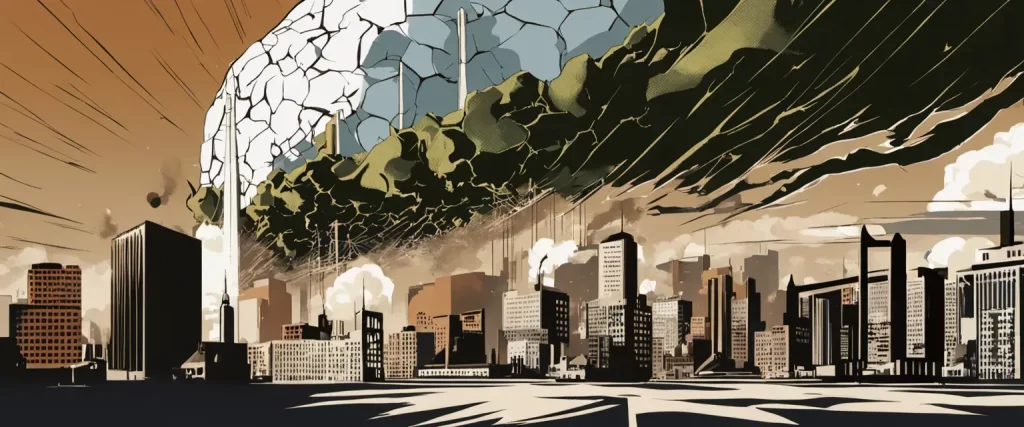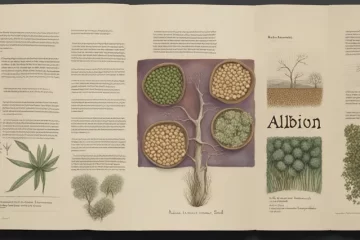Peace Amidst Devastation: A Recommendation of Hiroshima

In the wake of immense destruction and unfathomable human suffering, one book has emerged as a profound testament to the need for peace. John Hersey’s seminal work, “Hiroshima,” takes readers on a harrowing journey through the lives of six survivors in the devastated city after the atomic bomb was dropped. Witnessing the atrocities of war and its catastrophic consequences, Hersey’s narrative becomes a poignant plea for lasting peace. As we delve into the pages of this stirring account, we are confronted with the urgent question: how can humanity break free from the cycle of violence and conflict to embrace a future defined by harmony and understanding? In exploring the lessons of “Hiroshima,” this article seeks to rekindle the collective yearning for peace and inspire change in our world.
What is Peace
Peace is a state of harmony characterized by the absence of conflict, violence, and hostility. It is both a collective and individual aspiration that seeks to cultivate mutual understanding, empathy, and cooperation among individuals and communities. Peace is a fundamental human right, as recognized by the United Nations, and an essential foundation for the development, progress, and well-being of societies.
At its core, peace entails the resolution of conflicts through nonviolent means, promoting dialogue, and fostering mutual respect. It requires the recognition of diversity and the celebration of differences while striving for common goals. Peace should not be perceived as the mere absence of war, but rather as the presence of justice, equality, and freedom. It encompasses all aspects of human existence, including political, social, economic, and environmental dimensions.
Achieving lasting peace often demands addressing root causes of conflicts such as poverty, injustice, inequality, discrimination, and lack of access to resources. Sustainable peace cannot be achieved without addressing these underlying issues and working towards their resolution. This may involve implementing policies that promote social justice, human rights, and democratic governance, as well as investing in education, healthcare, and economic opportunities for all.
Moreover, peace is not solely an external state of affairs but also an internal state of being. Inner peace refers to a calm and tranquil state of mind, free from anxiety, stress, and inner conflicts. Cultivating inner peace is essential for individuals to contribute to peaceful societies. Practices such as meditation, mindfulness, and self-reflection help individuals find balance, contentment, and a sense of purpose, enabling them to engage with others in a respectful and compassionate way.
Peace is not a static concept; it requires ongoing efforts, perseverance, and continuous commitment from individuals, communities, and nations. It necessitates dialogue and mediation to build trust, foster reconciliation, and promote understanding. Building peaceful societies involves embracing diversity, promoting tolerance, and nurturing empathy. It requires investing in education for peace, facilitating opportunities for cross-cultural exchanges, and fostering a culture of peaceful coexistence at all levels of society.
In conclusion, peace is more than just the absence of conflict; it is a multi-dimensional concept that encompasses social, political, economic, and internal aspects of human existence. It requires the resolution of conflicts, the promotion of justice, equality, and human rights, as well as the cultivation of inner peace. Achieving and sustaining peace necessitates collective and individual efforts, rooted in dialogue, understanding, empathy, and cooperation. It is a universal aspiration that has the power to transform individuals, communities, and the world at large.
Why is Peace Important to Us?
Peace is important to us for several reasons:
1. Promotes cooperation and understanding: Peace creates an environment where individuals and nations can work together towards common goals. It allows for open dialogue and negotiation, fostering understanding and empathy among different groups.
2. Ensures security and stability: Peace is essential for personal and national security. In a peaceful society, people feel safe and secure, leading to improved personal well-being and societal stability. Nations without internal conflict can focus on development and progress rather than dealing with violence and unrest.
3. Enhances social and economic development: Peace is closely linked to social and economic development. It provides a stable environment for individuals to pursue their goals and aspirations. Peaceful nations attract investments, promote trade, and foster economic growth, resulting in improved living standards for their citizens.
4. Protects human rights: Peace is fundamental to the protection and promotion of human rights. In peaceful societies, individuals have the freedom to express themselves, access education and healthcare, and participate in the decision-making process. Peace ensures that the rights and dignity of every individual are respected and upheld.
5. Preserves the environment: Peace is closely connected to environmental sustainability. Conflict and war often lead to the destruction of natural resources, pollution, and ecological damage. In contrast, peace enables nations to collaborate on environmental protection and sustainable development practices, ensuring a healthier planet for future generations.
Overall, peace is important to us as it not only guarantees safety and stability but also allows for growth, cooperation, and the preservation of human rights and the environment. It creates the foundations for a just and inclusive society where all individuals have the opportunity to thrive and contribute positively.
Unlocking Peace from Hiroshima

Hiroshima Introduction
Hiroshima by John Hersey is a non-fictional book that tells the stories of six survivors of the atomic bomb dropped on the Japanese city of Hiroshima on August 6, 1945, during World War II. The book is based on extensive interviews with the survivors and provides a detailed account of the events leading up to the bombing, the immediate aftermath, and the long-term effects on the survivors’ lives.
The book begins by introducing the six individuals: Miss Toshiko Sasaki, a young clerk working in a factory, Dr. Masakazu Fujii, a physician running a small hospital, Mrs. Hatsuyo Nakamura, a widowed mother of three, Father Wilhelm Kleinsorge, a German priest, Dr. Terufumi Sasaki, another physician working in a hospital, and Reverend Kiyoshi Tanimoto, a Methodist minister and social worker. It then proceeds to describe their experiences before, during, and after the bombing.
On the morning of August 6, 1945, when the bomb named “Little Boy” was dropped on Hiroshima, all six individuals were affected in different ways. Their lives were forever changed as they faced unimaginable destruction, death, and suffering. The survivors recount their individual experiences of the bomb’s initial blast wave, the intense heat and fires that followed, and the subsequent radiation sickness that afflicted many.
In the immediate aftermath, despite their own injuries and desperate situations, the survivors worked tirelessly to help others. They witnessed immense human suffering, including horrific injuries, burns, and the agonizing deaths of countless people. Hospitals and medical facilities were overwhelmed by the massive number of casualties.
The book also explores the long-term effects of the atomic bomb on Hiroshima’s survivors. Many suffered from physical and psychological health issues for the rest of their lives. The radiation exposure caused various illnesses, including cancer, and affected subsequent generations as well. The survivors faced not only physical challenges but also societal discrimination and the emotional burden of their traumatic experiences.
Hiroshima by John Hersey is a thought-provoking and harrowing account of the devastating impact of nuclear warfare. Through the stories of these survivors, the book raises questions about the ethics and consequences of such weapons of mass destruction. It serves as a powerful reminder of the importance of peace and the indomitable human spirit in the face of unimaginable tragedy.
Peace Methods
In the book “Hiroshima” by John Hersey, there are several instances where the concept of peace is highlighted. Although some of these are not presented as explicit methods, they reflect the characters’ efforts to find peace amidst the chaos and devastation caused by the atomic bomb on Hiroshima. Here are some examples:
1. Acceptance: The survivors in the book, despite their physical and emotional suffering, strive to accept their circumstances and find inner peace. For instance, Dr. Masakazu Fujii, a physician who loses his hospital, accepts the destruction and starts helping others in need.
2. Selflessness: Many characters in the book demonstrate selflessness in their actions. Dr. Terufumi Sasaki, another doctor in the story, tirelessly treats patients, working to bring them relief and comfort. This selflessness reflects the desire for peace by helping others.
3. Reconciliation: Reverend Kiyoshi Tanimoto, a Methodist minister, focuses on bringing people together and finding common ground. He works towards reconciliation and helps to rebuild the community amid the ruins, promoting peace through unity.
4. Forgiveness: The book mentions the importance of forgiveness as a way to move forward and find peace. Kikue Shiota, a widow who loses her family, forgives the pilot who dropped the bomb, recognizing that harboring hatred will not contribute to healing.
5. Resilience: The survivors in the book display remarkable resilience, emphasizing their commitment to overcoming the tragedy and rebuilding their lives. Their determination and hope for a better future contribute to the pursuit of peace.
It’s important to note that these instances are not presented explicitly as methods or strategies for peace but rather as the actions and attitudes of the survivors in their attempt to find peace and rebuild their lives in the aftermath of the atomic bomb.
Hiroshima Quotes
Hiroshima quotes as follows:
1. “Their faces were wholly burned, their eyesockets were hollow, the fluid from their melted eyes had run down their cheeks.”
2. “A sobbing voice, more frightened than belligerent, asked, ‘Why did you throw me into hell?'”
3. “Suddenly, Dr. Fujii was under a mass of plaster and bricks and his kettle-shaped clinic was smashed. Gravel and fragments tore his back and legs as he struggled out.”
4. “Now the entire wreckage of Hiroshima was aflame from end to end.”
5. “Some found water and drank. Others went to wells and drew water and drank. Somebody sang ‘Jiji no yume wa kantan ni kanau (My grandfather’s dream will come true easily).'”
6. “The city was a phenomenon of blast and fire, the fires being whipped by a swirling windstorm of hurricane force.”
7. “After the flash, Hiroshima was a deathly still, tautly stretched zone of silence.”
8. “Everything exploded at once. I had the impression that every house in the neighborhood was crumpling up.”
9. “The bicycle, the basic means of transport in Hiroshima, became some people’s last thought in the moment of death.”
10. “The ashes trembled above us, as if riding on a cushion of air, rising and falling, threatening to cover us all in a single tide.”

More Books About Peace
1. The Vanquished: Why the First World War Failed to End” by Robert Gerwarth
In “The Vanquished,” Gerwarth explores the aftermath of World War I and delves into the historical events that shaped the tumultuous post-war period. From the fall of empires to the rise of new political ideologies, this book examines the challenges faced by nations, emphasizing the significance of peacebuilding efforts during this transformative era.
2. Savage Continent: Europe in the Aftermath of World War II” by Keith Lowe
Lowe’s “Savage Continent” provides a comprehensive account of Europe’s struggle to rebuild and reconcile after the devastation of World War II. Exploring the chaotic aftermath, the book delves into the challenges faced by individuals, societies, and nations trying to establish a lasting peace, shedding light on post-war reconciliation and the role of forgiveness in healing the continent.
3. Lawrence in Arabia: War, Deceit, Imperial Folly, and the Making of the Modern Middle East” by Scott Anderson
Offering a unique perspective on peacemaking efforts during World War I, Scott Anderson’s “Lawrence in Arabia” explores the complex dynamics that influenced the Middle East in the early 20th century. The book delves into the life of T.E. Lawrence and his endeavors to shape the region’s future, making it an insightful read for those interested in the pursuit of peace in a troubled region.
4. A Path Appears: Transforming Lives, Creating Opportunity” by Nicholas D. Kristof and Sheryl WuDunn
“A Path Appears” combines compelling stories, research, and practical advice to present a roadmap for fostering peace and creating positive change in the world. The authors focus on various global challenges, including poverty, violence, and gender inequality, and highlight inspiring initiatives that demonstrate the power of personal and collective action in transforming lives and communities.
5. “The Art of Peace: Nobel Peace Laureates Discuss Human Rights, Conflict, and Reconciliation” edited by Jeffrey Hopkins
“The Art of Peace” brings together interviews with Nobel Peace Prize laureates, offering their valuable insights on peace, human rights, and conflict resolution. This collection provides a diverse range of perspectives from notable figures such as the Dalai Lama, Malala Yousafzai, and Aung San Suu Kyi, making it an engaging and thought-provoking read for anyone interested in understanding the paths to peace.
These book recommendations cover a wide range of historical periods, regions, and approaches to peace. From analyzing past conflicts to exploring transformative efforts and personal narratives, each book provides valuable insights into the pursuit of peace and the challenges associated with it.



0 Comments